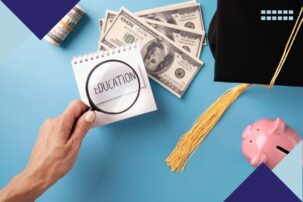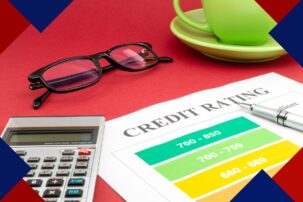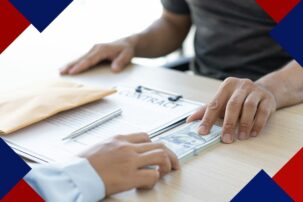Student loan forgiveness: how to qualify and apply for debt relief

Getting a degree is not easy, wherever it is and whatever degree it is. You have to study, struggle, and pay the tuition fee simultaneously, and not everybody has the resources to do it comfortably.
In the USA, you can get a student loan to continue your studies until you complete your degree, but it is not always easy to pay off the debt while completing your degree.
Thanks to the US government, several student loan forgiveness plans have been started that help you pay off your debts partially or completely.
Let’s learn more about student loan forgiveness, what it is, who it applies to, and how to benefit from it. Keep reading.
What is Student Loan Forgiveness?
Student loan forgiveness is a program that relieves borrowers from the financial stress of loans by allowing them to pay off their loans partially or completely.
Student loans are taken for post-secondary education, and they can be paid off with the help of federal student loan forgiveness programs.
This program does not apply to all loans, it is only available for a few types of loans. There is also an eligibility criterion that doesn’t all kinds of loan borrowers.
There are a few factors like loan type, income level, and type, and your occupation, if you belong to certain public service or military professions then you are eligible for student loan forgiveness, and if you qualify for it, your loan will be fully or partially paid.
How Does it Work?
Student loan forgiveness is a US government-based program that releases the borrowers from the responsibility and stress of paying off the debt.
Student loan forgiveness is only applied to those loans that are issued by the US government or Government-backed programs.
It does not apply to privately issued loans, such as from banks or private lenders. A few more factors decide if you are fully or partially eligible for student loan forgiveness, like income type and level, occupation, and loan type.
There are several student loan forgiveness programs like
- Income-driven Repayment (IDR)
- Public Service Loan Forgiveness (PSLF)
- Nurse Corps Loan Repayment Program (LRP)
- Teacher Loan Forgiveness
It is important to note that only federal loans are eligible for student loan forgiveness.
If you want your loan to be fully or partially forgiven, you must apply for the program and keep making payments until you are qualified for it.
How Do I Know If I’m Eligible?
There are several different student loan forgiveness programs, and to find out if you are eligible for one of them or not, you need to know more about them, because each one of them may have slightly different requirements.
Here’s how to know if you are eligible for the loan forgiveness program or not:
- Loan borrowers whose loan amount has significantly increased due to interest could cancel up to $20,000 of their debt. Those who are applying for income-driven repayment and are making $120,000 per year, or $240,000 jointly, if married, could benefit from automatic forgiveness of all the amount that has increased due to the interest.
- Undergraduate borrowers, who have been paying for 20 years, could have all their remaining loans canceled.
- Graduate borrowers, who have been paying for 25 years, could have their remaining loan canceled as well.
- Borrowers with federal loans, who are eligible under any of the student loan forgiveness programs mentioned above, could see all their loans canceled, even if they haven’t applied for it.
Those borrowers who had federal hardships due to the unavailability of federal support to the school may also get some relief, as the government is making a rule for them as well.
Ways To Qualify:
Student loan forgiveness is a positive and creative getaway planned by the US government for the borrowers of student loans, who have to keep repaying the loan for decades.
It is an initiative taken by Biden’s administration that can help millions of Americans to clear their balances. Several programs are designed to relieve you from your pending debts.
Here’s how to qualify for one of the student loan forgiveness programs:
Public service loan forgiveness:
If you have paid 120 loan payments, which means you are paying for 10 years, then you are eligible for public service loan forgiveness for the remaining amount of your loan.
However, all your payments should have been done through an income-driven repayment method, and only if you work full-time for a government or non-profit organization.
Income-driven repayment forgiveness:
If you have been paying loans for 20–25 years, all the remaining loans will be canceled, no matter if taken for undergraduate or graduate studies.
Teacher loan forgiveness:
If you are a teacher and teaching for five consecutive years, then you are eligible for this plan, and you may get loan forgiveness for up to $17,500.
You should be working full-time in a low-income school to become eligible for this plan.
Disability discharge:
If you have a permanent disability that prevents you from working permanently, then you are eligible for total and permanent disability discharge.
Some people like recipients of social security and veterans may get their loans automatically canceled if they are eligible.
How to Apply for Student Loan Forgiveness?
If you think you are eligible for student loan forgiveness, and you should take benefit of it while you can, then you should get to your loan provider as soon as possible, to know more about the loans you have.
You should also get the following documents ready in case:
- Financial information
- Spouse information, if you are married
- Personal information
- FSA ID (verified)- this is the login for access to the account of the us department of Education system, for students or their parents to electronically identify themselves.
Now that you have all the documents ready, you are good to apply for the federal student loan forgiveness program that suits your criteria. Let’s see how to apply for student loan forgiveness.
Step 1: Check eligibility
First of all, you need to know which student loan forgiveness program you are eligible for.
It depends on the number of payments you have made and the organization you have been working in.
Step 2: Apply
Now you know which plan is right for you so it’s time to apply. Here’s how the application works for different student loan forgiveness programs:
- Public service loan forgiveness: You can use the PSLF Help Tool to apply. You have to submit it annually or when you change your employer because employer certification is required.
- Income-driven loan forgiveness: Enroll your loans under IDR and make your payments regularly. Once you meet the requirements, your loan will be canceled automatically.
- Teacher loan forgiveness: Once you have completed five years of service, you can submit your form to your loan provider.
- Disability discharge: You can apply for disability discharge on Student Aid.
Step 3: Track your application
Once you have submitted your application, regularly track your application status from your loan provider.
For PSLF, you can check the status on the MOHELA portal (PSLF’s designated servicer).
Does student loan forgiveness hurt your credit?
Yes, student loan forgiveness may hurt your credit a bit, but only temporarily, instead, it could help you in the long run as it improves your creditworthiness due to a lower DIT (debt-to-income) ratio, because your balance drops to zero.
It is important to make your payments timely, while you have to repay because the payment history of your student loans will stay on your credit report.
Even if there’s a minor impact on your creditworthiness, don’t worry about it as it will be resolved in a few months.
Student loan forgiveness is an initiative the US government took for federal loan borrowers who took loans for their graduate or undergraduate studies.
If you are repaying for 10 years at least, then may get some relief from the government on the balance of your federal loan.
After reading this guide, if you think you are eligible for any of the above-mentioned student loan forgiveness programs, then don’t wait to apply for it. Take benefit while you can!
Related content

Student Loan: complete guide to understanding, applying, and managing your education loans

Loans for Bad Credit
Loans for Bad Credit

Personal Loans

How to Negotiate a Loan
